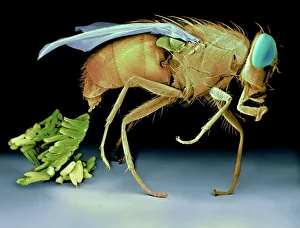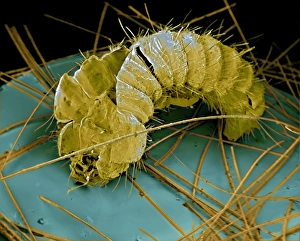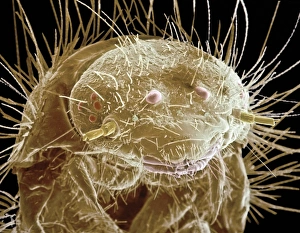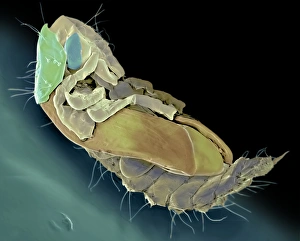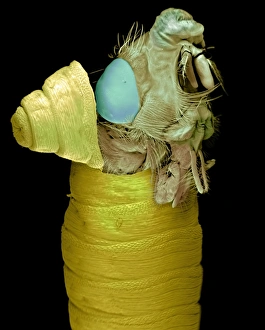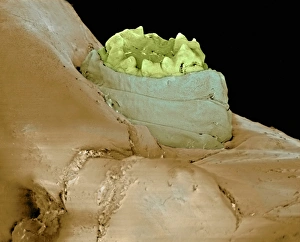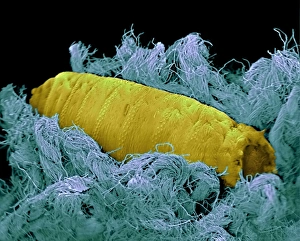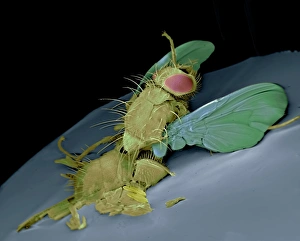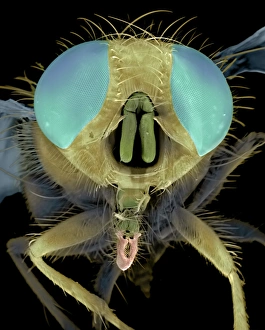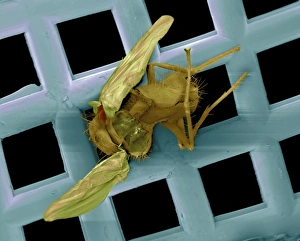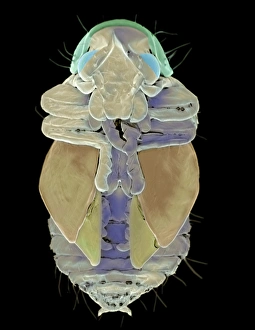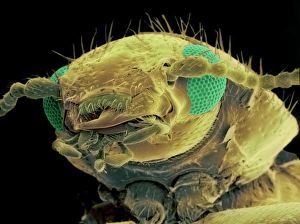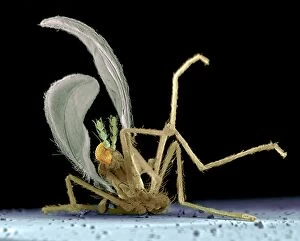Crime Research Collection
"Unveiling the Microscopic World of Crime: A Fascinating Journey into Crime Research" Step into the realm of crime research
All Professionally Made to Order for Quick Shipping
"Unveiling the Microscopic World of Crime: A Fascinating Journey into Crime Research" Step into the realm of crime research, where even the tiniest details hold immense significance. Through the lens of a scanning electron microscope (SEM), we delve deep into the intricate world that lies beneath our very eyes. Blowfly laying eggs, SEM: Witness nature's cycle unfold as blowflies meticulously deposit their tiny eggs on unsuspecting surfaces, leaving behind crucial evidence for forensic investigators. Skin of dermestid beetle larva, SEM: The minute textures and patterns etched onto the skin of these beetles' larvae offer invaluable clues in determining time since death or presence at a crime scene. Dead fly, SEM: In this microscopic exploration, every aspect matters - from examining a deceased fly's body structure to unraveling its last moments before meeting its demise. Larder beetle larva head, SEM: Zooming in on this minuscule predator reveals astonishing details about its feeding habits and potential involvement in decomposition processes relevant to criminal investigations. Ham beetle larva, SEM: Uncover how these voracious larvae contribute to breaking down organic matter while leaving distinctive traces that aid forensic entomologists in estimating postmortem intervals. Blowfly pupa hatching, SEM: Observe with awe as blowfly pupae transform into adult insects within their protective cocoons – an essential stage used by experts to establish timelines during investigations. Blowfly maggot feeding, SEM: Dive deeper into understanding blowflies' maggots' feeding behavior through high-resolution imagery capturing their unique mouthparts and devouring techniques critical for forensic analysis. Blowfly maggot pupa, SEM: Explore the remarkable transformation process undergone by blowfly maggots as they enter their pupal stage – offering valuable insights into timeframes surrounding criminal events. Dead fly on car windscreen, SEM.

